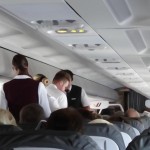Design milestone is important step toward first 777 Freighter for Air France
SEATTLE – The Boeing Company [NYSE: BA] progressed with development of the new 777 Freighter by completing firm configuration of the airplane’s design recently. Boeing reached this significant milestone after months of collaboration with airline customers and program partners to determine the optimal configuration for the new cargo airplane.
Achieving firm configuration means that Boeing has completed major trade studies to finalize the airplane’s overall capability. This allows Boeing and its suppliers to begin detailed design of parts, assemblies and other systems for the 777 Freighter. The detailed designs will then be released to Boeing factories and its suppliers to begin production of the new cargo airplane.
“Working together with our customers and program partners, we designed the 777 Freighter to be the world’s most capable twin-engine cargo airplane,” said Lars Andersen, vice president – program manager, 777 Program, Boeing Commercial Airplanes. “The 777 Freighter will have the lowest trip costs of any large freighter and burn up to 35 percent less fuel per tonne compared to today’s freighters.”
Air France, which launched the 777 Freighter in 2005 with an order for five freighters, has been closely involved in the airplane’s design and development. Boeing will continue to seek input from Air France as it enters into detailed design work. The first 777 Freighter is scheduled for delivery to Air France in the fourth quarter of 2008.
“We are very pleased with the high degree of involvement and input that Boeing has solicited from Air France,” said Pierre Vellay, vice president of New Aircraft and Corporate Fleet Planning, Air France. “We are true partners on this very important program. We know exactly how the 777 Freighter is evolving throughout the design process and we continue to be excited about the performance and capability this airplane will mean for our cargo business.”
The 777 Freighter will have a range of 4,985 miles (9,065 km) with a full payload and general market densities, making it the world’s longest-range twin-engine freighter. Maximum takeoff weight for the new cargo airplane will be 766,000 pounds (347,450 kg) with a revenue payload capability of 229,000 pounds (103.9 metric tons). The 777 Freighter will feature unmatched capacity for a twin-engine freighter, accommodating 27 standard pallets on the main deck, ten pallets in the lower cargo hold and 600 cubic feet (17 cubic meters) of additional bulk cargo.
“The 777 Freighter is designed to complement 747 cargo operations with easy direct-transfer shipments,” said Dennis Todd, engineering leader for the 777 Freighter Program. “In addition, operators will benefit from the Freighter’s commonality with the passenger models of the 777 family.”
The main cargo door on the 777 Freighter will be sized to facilitate easy interlining with the 747 freighter, with the capability to accommodate transfer of 10-foot-high (three-meter) pallets between the two cargo airplanes.
Other changes to the 777 Freighter include an enhanced, lightweight, powered cargo handling system with built-in test equipment that continually monitors the operational health of the system, and strengthening certain airplane structures and removal of passenger-related items such as windows and doors.
The 777 Freighter is based on the 777-200LR Worldliner (Longer Range) passenger airplane and will share the family’s advanced features: state-of-the-art flight deck, fly-by-wire design and an advanced wing design that includes raked wingtips. The airplane will be powered by the General Electric GE90-110B1 engine, the world’s most powerful commercial jet engine.
The 777 Freighter is the sixth and newest model of the efficient and reliable twin-engine 777 family. Four operators have placed 23 firm orders for the airplane including launch customer Air France, Emirates, Air Canada and the Avion Group. In addition, Flyington Freighters has announced a commitment to purchase four airplanes.





